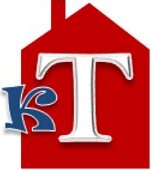The Future of Rentals in Madison: What’s Next for Landlords and Tenants?
As Madison, Wisconsin, emerges from the challenges posed by the COVID-19 pandemic, the rental market is undergoing significant transformations. With shifting population dynamics, technological advancements, and evolving tenant preferences, both landlords and tenants are facing a new landscape in the rental market. This article explores the future of rentals in Madison, delving into emerging trends, potential challenges, and opportunities for both parties.
The Shift in Rental Demand
In recent years, the demand for rental properties in Madison has seen a noticeable shift. With a robust influx of young professionals, students, and families relocating to the city, demand has surged particularly in neighborhoods that offer a blend of affordability, community amenities, and accessibility to local services. Areas near the University of Wisconsin-Madison, along with emerging neighborhoods like the East Side and Williamson Street, are becoming increasingly popular.
As remote work becomes more entrenched, tenants are seeking homes that accommodate flexible living arrangements. Spaces for home offices, larger living areas, and outdoor access are now top priorities. In response, landlords are evaluating their properties to meet these new criteria, making upgrades and renovations that cater to tenants’ evolving needs.
Rental Technology: A Game Changer
The integration of technology into the rental market is transforming how landlords and tenants interact. Rental listing platforms, virtual tours, and digital lease agreements are becoming standard practice. Through online applications and payment systems, landlords streamline the renting process and enhance tenant convenience.
Moreover, property management technology is on the rise, enabling landlords to track maintenance requests, communicate directly with tenants, and manage their portfolios more efficiently. This technological landscape not only improves operational efficiency for landlords but also enhances the tenant experience, fostering smoother communication and faster issue resolution.
Sustainability and Green Living
Sustainability is an increasingly influential factor shaping the future of rentals in Madison. Environmental consciousness is becoming vital for both landlords and tenants. Properties with green features, such as energy-efficient appliances, solar panels, and sustainable building materials, are gaining preference. Tenants are willing to pay a premium for homes that reduce their carbon footprint and offer lower utility bills.
In response, many landlords are investing in eco-friendly upgrades and promoting sustainable practices. This not only appeals to environmentally conscious tenants but can also lead to increased property value and reduced long-term maintenance costs. The push for green living is becoming a significant differentiator in the competitive rental market.
Legal and Regulatory Changes
Landlords and tenants in Madison must remain vigilant of evolving legal regulations and tenant protections. Recently, discussions surrounding rent control and tenant rights have gained momentum, reflecting broader national conversations. While no concrete changes have yet been implemented, potential reforms may alter the rental landscape significantly.
Landlords may need to adapt to stricter regulations regarding evictions, rent increases, and tenant privacy. On the other hand, tenants should stay informed about their rights and the support available to them in an ever-changing legal environment. Open communication between landlords and tenants will be crucial in navigating these changes effectively.
The Importance of Community
As Madison’s rental landscape evolves, the concept of community will play a vital role in shaping tenant preferences. In a post-pandemic world, individuals increasingly seek connections and a sense of belonging, even within rental settings. Properties that foster community engagement—through shared spaces, organized activities, and inclusive environments—are more likely to attract tenants.
Landlords can capitalize on this trend by creating opportunities for social interaction, such as community gardens, shared amenities, or hosting events that encourage residents to mingle. This not only enhances tenant satisfaction but can also lead to improved tenant retention and loyalty.
Conclusion: An Evolving Landscape
The future of rentals in Madison presents both challenges and exciting opportunities for landlords and tenants alike. As the market continues to innovate and adapt, collaboration will be key. Landlords who embrace technological advancements, sustainability initiatives, and a community-oriented approach are likely to thrive. Similarly, tenants who remain informed and engaged will benefit from a rental market that increasingly prioritizes their needs and preferences.
Ultimately, as Madison grows and evolves, its rental market will reflect the diverse aspirations and values of its residents, paving the way for a vibrant and dynamic living environment in the years to come. Both landlords and tenants must remain proactive, adaptable, and open to change, ensuring that the future of rentals in Madison is bright and inclusive for everyone.
